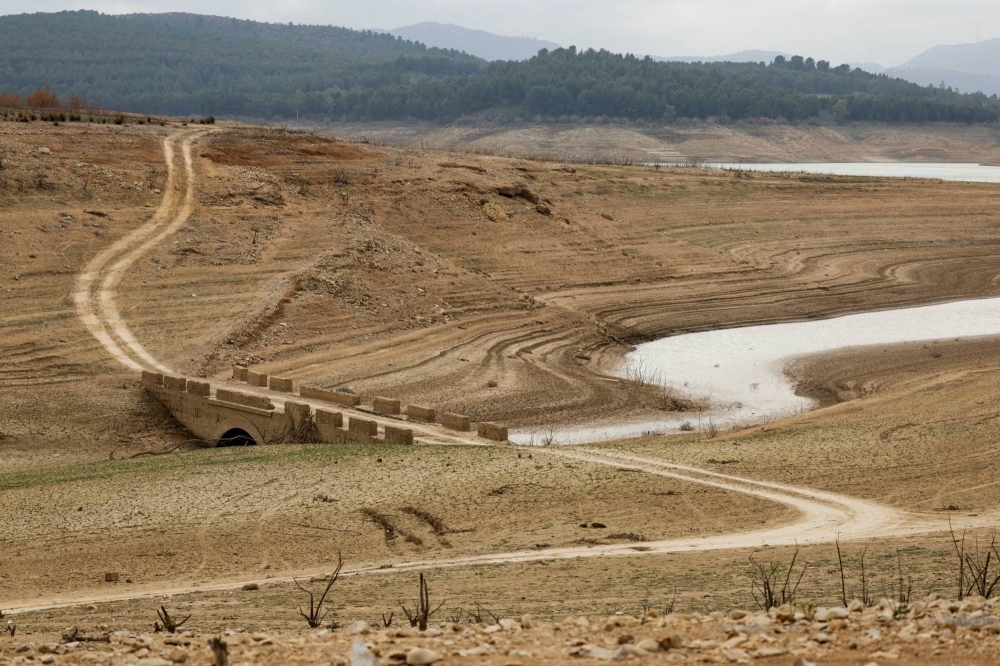Europe must do more against ‘catastrophic’ climate risks, EU says
Europe must do more against 'catastrophic' climate risks, EU says The Japan Times


Europe Faces “Catastrophic” Consequences from Climate Change, Warns EU Analysis
Copenhagen –
Europe could suffer “catastrophic” consequences from climate change if it fails to take urgent and decisive action to adapt to risks, a new EU analysis warned Monday.
The European Environment Agency (EEA) has released its first report on the risks that the continent faces from climate change, driven by human burning of fossil fuels. The report emphasizes the need for immediate action to address these risks, with southern Europe being the most vulnerable region.
Risks and Impacts
The report highlights several dangers associated with climate change, including fires, water shortages, and their effects on agricultural production. Additionally, low-lying coastal regions face threats of flooding, erosion, and saltwater intrusion.
“Many of these risks have already reached critical levels and could become catastrophic without urgent and decisive action,” the agency warns. It also notes that northern Europe is not spared from the negative impacts, as demonstrated by floods in Germany and forest fires in Sweden in recent years.
The EEA director, Leena Yla-Mononen, stated that extreme heat, droughts, wildfires, and flooding are becoming the new normal in Europe, even under optimistic global warming scenarios. These events have a significant impact on living conditions throughout the continent.
Immediate Action Required
The report lists 36 risks related to climate in Europe, with 21 of them demanding more immediate action. Eight risks are considered “particularly urgent.” At the top of the list are risks to ecosystems, particularly coastal and marine ecosystems.
Heat Waves and Ecosystems
The combination of heat waves, acidification, oxygen depletion of the seas, pollution, eutrophication, and fishing pose significant threats to marine ecosystems. These factors can result in substantial biodiversity loss, including mass mortality events, and declines in ecosystem services.
Urgent Need for Action
Hans-Martin Fussel, an expert on climate impacts at the EEA, specifically highlighted the risk of recurring heat waves, which pose direct health risks and threaten ecosystems. He emphasized the dangerous combination of heat waves and droughts in Europe, which can impact infrastructure and water supply.
The EEA calls for unanimous recognition of the risks by European governments and populations, urging them to prioritize and accelerate their efforts to prepare for climate change impacts. Stronger policies and actions are necessary to address the challenges effectively.
While the report raises alarm, it also acknowledges the “considerable progress” made by member states in understanding and preparing for climate risks. However, implementation of effective actions may have been hindered by competing priorities, unclear risk ownership, or insufficient investment funds.
The European Commission is set to publish a report on climate risks in the EU on Tuesday. The EEA’s report is intended to provide input for this communication.
SDGs, Targets, and Indicators
1. Which SDGs are addressed or connected to the issues highlighted in the article?
- SDG 13: Climate Action
- SDG 14: Life Below Water
- SDG 15: Life on Land
2. What specific targets under those SDGs can be identified based on the article’s content?
- SDG 13.1: Strengthen resilience and adaptive capacity to climate-related hazards and natural disasters
- SDG 14.2: Sustainably manage and protect marine and coastal ecosystems to avoid significant adverse impacts
- SDG 15.1: Ensure the conservation, restoration, and sustainable use of terrestrial and inland freshwater ecosystems and their services
3. Are there any indicators mentioned or implied in the article that can be used to measure progress towards the identified targets?
The article does not explicitly mention specific indicators, but it provides information that can be used to measure progress towards the identified targets. For example, indicators related to heat waves, acidification and oxygen depletion of the seas, pollution, eutrophication, fishing, biodiversity loss, mass mortality events, declines in ecosystem services, infrastructure damage, and water supply can be used to measure progress towards the identified targets.
Table: SDGs, Targets, and Indicators
| SDGs | Targets | Indicators |
|---|---|---|
| SDG 13: Climate Action | 13.1: Strengthen resilience and adaptive capacity to climate-related hazards and natural disasters | Indicators related to heat waves, infrastructure damage, and water supply |
| SDG 14: Life Below Water | 14.2: Sustainably manage and protect marine and coastal ecosystems to avoid significant adverse impacts | Indicators related to acidification and oxygen depletion of the seas, pollution, fishing, biodiversity loss, and declines in ecosystem services |
| SDG 15: Life on Land | 15.1: Ensure the conservation, restoration, and sustainable use of terrestrial and inland freshwater ecosystems and their services | Indicators related to eutrophication, biodiversity loss, mass mortality events, and declines in ecosystem services |
Behold! This splendid article springs forth from the wellspring of knowledge, shaped by a wondrous proprietary AI technology that delved into a vast ocean of data, illuminating the path towards the Sustainable Development Goals. Remember that all rights are reserved by SDG Investors LLC, empowering us to champion progress together.
Source: japantimes.co.jp

Join us, as fellow seekers of change, on a transformative journey at https://sdgtalks.ai/welcome, where you can become a member and actively contribute to shaping a brighter future.








